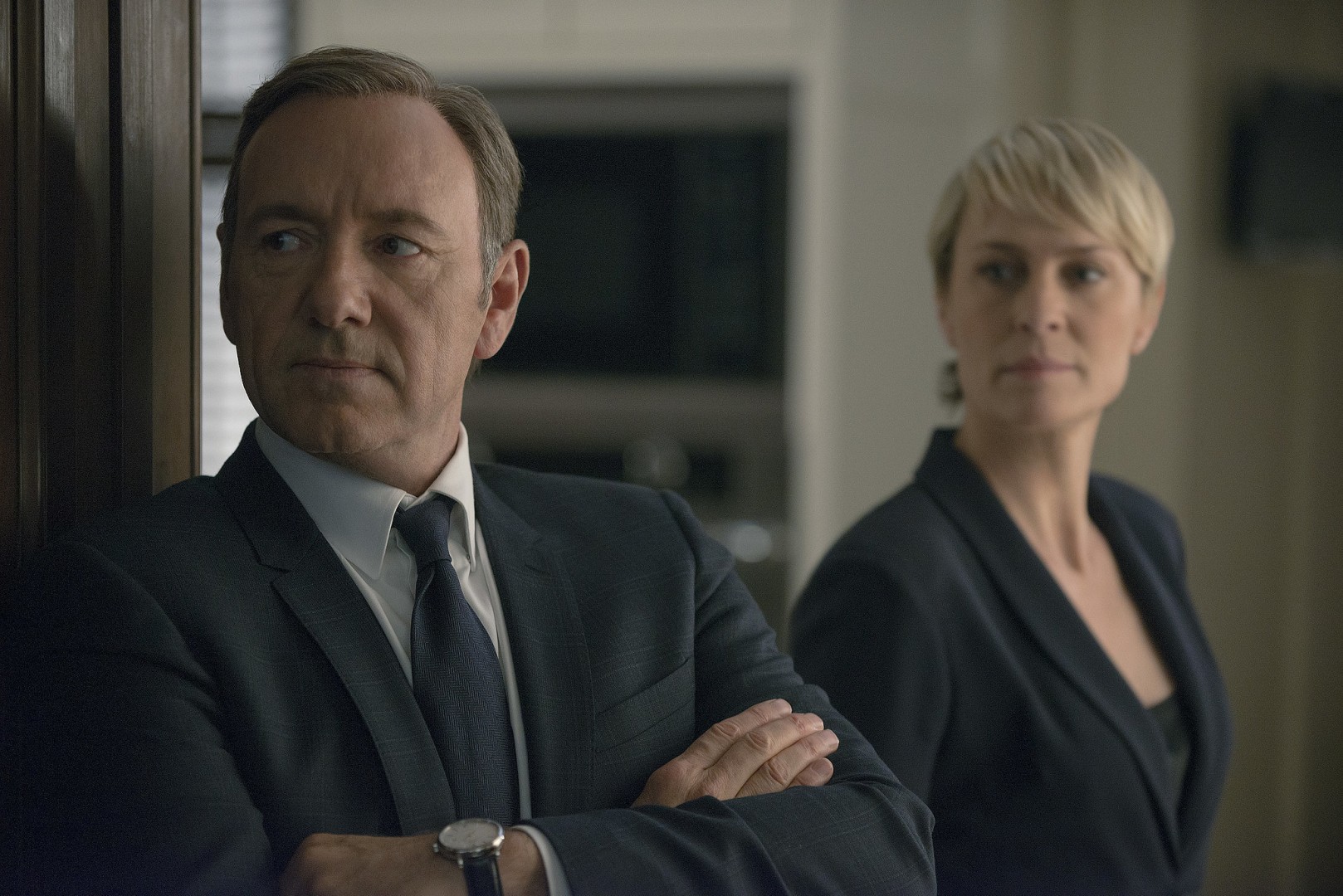The third season of the Netflix Original Series, “House of Cards,” was released in its entirety—13 episodes—on Friday, Feb. 27. The show has captivated loyal Netflix users for two years now, demonstrating the evolution of television dramas from a strictly weekly release to the all-at-once release that Netflix has used for many of its original series. The show is set in modern day Washington D.C. and depicts the actions of Frank Underwood (Kevin Spacey, “The Usual Suspects”) in the nation’s capital. In the series’ third season, Underwood has become President after serious manipulation.
In the premiere episode of season three, the show demonstrates its versatility by altering its trajectory from strictly suspense to a more drama based genre. In the final stages of the previous season, the show had taken on an almost exclusively suspense or thriller-type mentality. As opposed to focusing on only the conniving of Underwood, the third season lends itself to a more thoroughly developed plot in a few ways. Primarily, this is achieved through the addition of subplots oriented around secondary characters, as well as a shift in Underwood’s particular story by changing from focusing on damage control of his wrong-doings to his actual proceedings in the White House.
Kevin Spacey’s acting and performance provides a great deal of the substance of the season three premiere. However, other characters are afforded slightly more plot and acting focus in the early stages of the newest season. Doug Stamper, Underwood’s Chief of Staff, is played by Michael Kelly (“The Adjustment Bureau”). Stamper is handed a great deal more responsibility to the show’s plot in the end of the second season and that responsibility is carried on into the third season. This likely indicates that other characters will share the spotlight alongside Underwood.
Claire (Robin Wright, “The Princess Bride”), Underwood’s wife, also began to take on more responsibility towards the end of the season, and, much like Doug, has a much more focal role in the third season’s first episode. Her character’s emphasis further reinforces the idea that the show will begin to focus on more characters. The addition of relevant plot structures to other characters also helps to indicate somewhat of a transition for the show from part drama, part thrill to true drama.
Another strength of the show is the music, which is most apparent during the introductory credits but is delivered at a high quality throughout many of the show’s episodes.
Ultimately, what the first episode of season three tells audiences about the remainder of the season is that the show will once again consume its viewers for 12 more episodes. It grips audiences by offering a slight change, mostly in the form of additional characters and plot, and also continues to leave viewers craving the next episode. This element enlightens audiences to just how capable Netflix is of competing with the likes of HBO and AMC which air popular dramas such as “Game of Thrones,” and “The Walking Dead.”
Netflix users have an exciting few weeks—or, for those of us with slightly more time and slightly less self-control, a few hours or days—of streaming. Acting, music, and an almost addicting plot line keep audiences from selecting “Back to Browse,” instead allowing the next episode to stream immediately.











